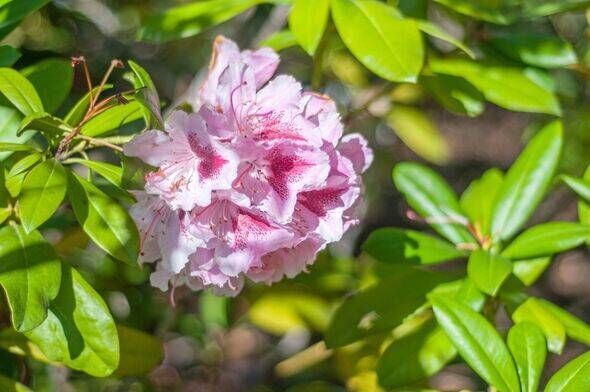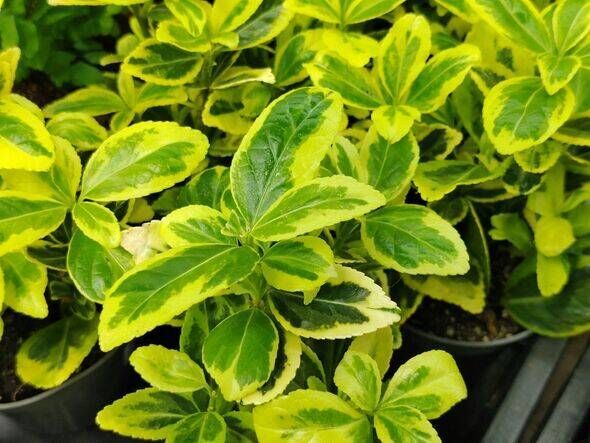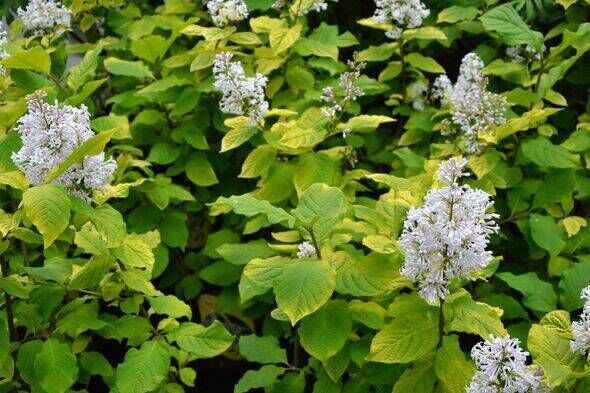

Shrubs, which are smaller than trees and have multiple main stems from the ground, are quick to speed ahead of their taller cousins in growth, particularly in their early years, making them ideal for a rapid transformation of gardens. According to the wisdom of the Royal Horticultural Society, container-grown shrubs offer the flexibility to be planted year-round, presenting garden enthusiasts with endless opportunities to enhance their green spaces.
For those pondering over their next botanical addition, summery varieties like fuchsia or buddleia might catch the eye, yet Alan Titchmarsh, the celebrated gardening guru, advocates for a more long-term vision. On his show, Gardening With Alan Titchmarsh, he recommended, "Summer flowers are all very well for giving you instant appeal, but what every garden needs really, is year-round structure." Alan, who's also known for hosting Love Your Garden, points out that shrubs can effortlessly fulfil this need, with several standing out for their ability to imbue gardens with "form, colour and interest, right the way through the year".
 Eucalyptus Azura
Eucalyptus Azura
Eucalyptus Azura boasts an all-year-round leafy presence. With its roots in Australia, this aromatic evergreen can soar up to eight meters unless pruned regularly; yet its impressive foliage renders it an outstanding choice for the keen gardener.
Alan recommends harvesting branches for floral displays all year and advocates for an aggressive cutback in spring to manage size. He advises maintaining the eucalyptus as "young and low" to ensure the silver-toned leaves stay pronounced.
Nevertheless, due to its robust root system, it's wise to steer clear of planting eucalyptus azura near drains or foundations. It thrives best when positioned openly in a protected area bathed in sunlight.
The plant can endure temperatures as low as minus 10C and even colder, making it resilient to the UK's frosty winters.
 Dogwood
Dogwood
Among the abundant selection available in nurseries, Dogwood steals the spotlight for Alan. As Cornus Alba Sibirica, it can achieve heights of 2.5m and thrives best in a garden spot bathed in sunshine, though it won't shy away from light shade.
This shrub, notable for its red stems and verdant foliage, promises to be more than just a seasonal delight.
Dogwood presents a trio of colourful attractions for any ardent gardener: pristine white blossoms in spring, verdant foliage come summer, and "vibrant crimson" stems once winter descends. The cornus is perfect for those gardeners yearning to pepper their gardens with autumnal tones that shine amidst evergreens during the cooler months.
Gardening aficionado Alan highlights that a rigorous prune in March is critical for spurring the vivid new growth dogwoods exhibit each year.
Mexican orange blossomThe sturdy green leaves of this shrub, also known as Chosya 'Sundance,' yield clusters of delicate white blooms in spring. Alan observes that "nothing is brighter" than the yellow-leaved variant of the Mexican orange blossom.
Even young plants flaunt bright yellow-toned leaves, with brighter green shoots emerging as the shrub matures. Among shrubs, this one grows rapidly and assumes a rounded shape.
Pruning is straightforward. You can frequently trim the orange blossom and cut it back quite hard in spring to encourage upward growth.
Alan describes this as a "plump cushion" of a shrub that grows to around shoulder height, but you can easily keep it low if you prefer.
 Euonymous japonicus
Euonymous japonicus
Perfect for an exposed or sheltered spot, the Euonymous japonicus can grow between 2.5m and 4m tall. With its bushy evergreen growth, Alan recommends it as a lower-maintenance alternative to topiary.
This potted lollipop shrub is perched on a tall, robust stem and sprouts dark green oval leaves with petite green flowers. For a striking display, Alan recommends arranging three or four euonymous japonica along a pathway.
One of the best aspects of this variety is its resilience. It's perfect for coastal planting or hedging and flourishes in well-drained soil in sun or shade.
RhododendronLastly, there's the Rhododendron, especially the Cosmopolitan variety which delights with glossy, evergreen leaves and dazzling pale pink blooms in the springtime, provided they receive the right care to promote blooming.
Rhododendrons, cherished for their lively green foliage fashioned into a dome-like shrub, favour a tucked-away corner with dappled shade and soil on the acidic side.
Fortunately, most British soil tends to be more acidic, and gardeners will quickly notice if the soil pH is too neutral or alkaline: the leaves will turn yellow, cautioned Alan.
Unlike eucalyptus and dogwood, rhododendron produces "vast clusters" of white, yellow, purple, and crimson flowers. Although the shrub has the potential to grow up to 20ft tall, most reach head-height and are "easy to keep in check".
-
Trump says Iran, Israel agree to ‘total cease-fire’

-
Atletico Madrid manager Diego Simeone reflects on Club World Cup exit

-
The lowdown on the promoted clubs as Oviedo seal emotional top-flight return

-
Thousands of state pensioners get £5,740 from DWP with six month rule

-
Qatar: UK and US citizens told 'shelter in place'
